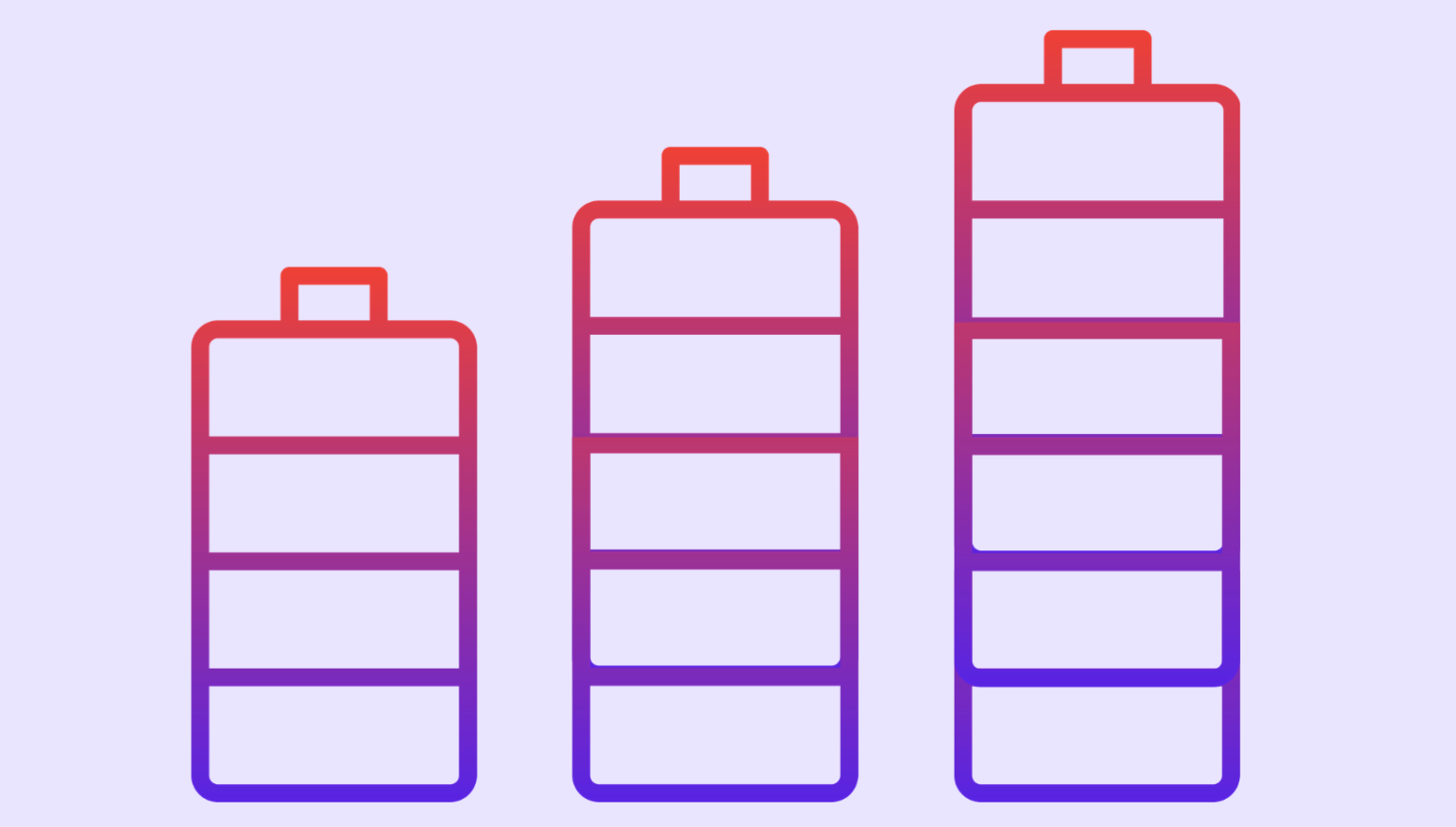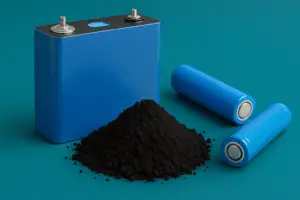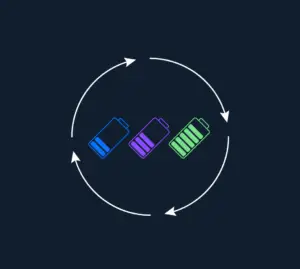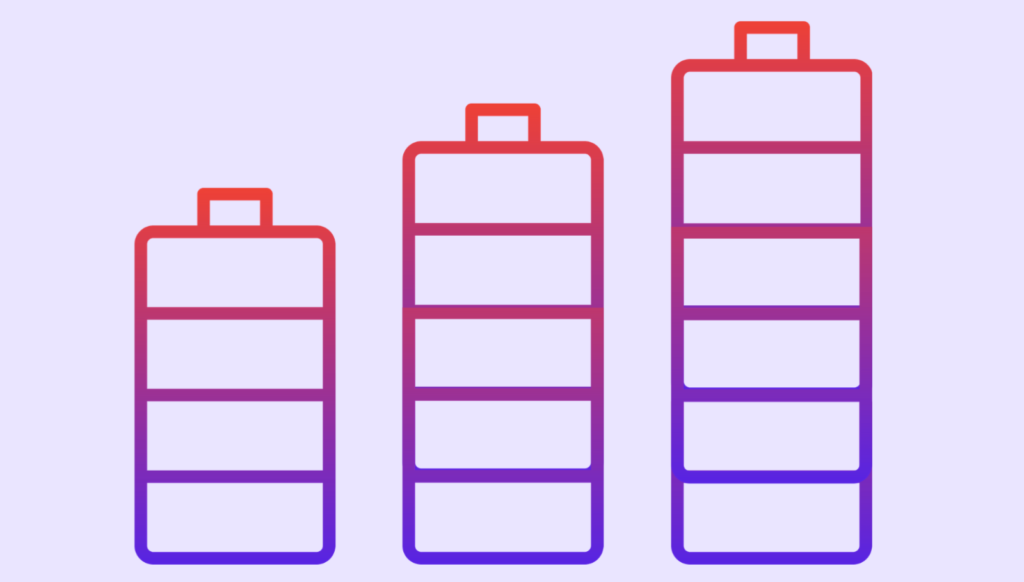Examining the importance of different energy storage solutions in the renewable energy landscape
The United States continues to battle climate change with the goal of reaching 100% carbon pollution-free electricity by 2035. From frequency regulation to ensuring grid stability during heavy electricity demand, batteries fill critical gaps in a renewable energy-powered grid. However, not all energy storage is created equal. Different energy storage technologies offer different discharge duration ranges – a measurement indicating how many hours of energy can be delivered in one discharge cycle. The three main categories of durations are short, medium, and long, with each serving specific needs in the evolving clean energy space.
It’s become clear in recent years that our energy storage needs will need to be met by more than one storage type, and a wide range of discharge durations will be required. A diverse portfolio of energy storage technologies with varying durations will inevitably be key to meeting our decarbonization and renewable energy goals.
Short-Duration Energy Storage
Short-duration energy storage (SDES) assets are intended to provide energy for a few milliseconds up to four hours. An example of a technology that can only provide very short-duration energy are capacitors, which are used in electronics and power systems to quickly store and release electrical energy. Flywheels are an example of a storage mechanism that store kinetic energy in a rotating mass and instantly provide power bursts. Sodium-ion and nickel-zinc batteries are also technologies proven to provide short-duration, high-power storage, particularly for UPS applications. In the larger energy grid, lithium-ion makes up the vast majority of energy storage projects for the millisecond- to four-hour duration range.
SDES is often used to stabilize the frequency of power grids, essential for maintaining the reliability and efficiency of electrical distribution systems. Storage solutions used for this purpose help manage sudden changes in electricity supply or demand as the systems can quickly respond to balance the unexpected spikes or drops to the electrical grid.
The other clear advantage of SDES solutions is their ability to relieve stress on the grid when demand is at its highest. They can store solar energy during the day, then release it several hours later when people get home from work and turn on their AC, use their dishwasher, and so on. But SDES applications can be limited due to inherent discharge limitations or because economics don’t support durations beyond 4 hours. Further, as many SDES technologies are intended for short, high-power discharges, the systems require careful management and planning for continuous and reliable operation. They aren’t known to be “set it and forget it.”
Medium-Duration Energy Storage
Medium-duration storage solutions are intended to provide electricity for four to ten hours, bridging the gap between short- and long-duration storage needs. Examples of medium-duration energy storage technologies include flow batteries, zinc bromine, nickel hydrogen, and liquid metal. Of these technologies some can discharge for less than four hours or more than ten hours, but there is a specific set of grid-related needs that these technologies are able to fill.
For the grid, medium-duration storage technologies are useful to store wind energy generated in the night to be used the next day, roughly eight to twelve hours later. By storing excess energy during high production periods, medium-duration storages allow for a more even distribution of renewable power throughout the day. Basically, they can provide the load shifting component of short-duration storage but for longer.
For other applications like industrials, medium-duration energy storage is very useful when it can be stored and managed behind the meter. An example of this could be an electric arc furnace (EAF) at a steel mill with an onsite solar and storage system. With the right technology the battery can capture wind energy at night and solar energy at peak sunlight to provide the furnace high power and high energy throughout the day.
The advantages of medium-duration energy systems include that they can store a lot of electricity in a relatively compact space, and they can be used to meet a wide range of applications. They also tend to have higher up-front costs than lithium-ion systems, which is offset by significantly longer service lives. Also, some have high self-discharge rates which prevents them from storing energy for longer periods.
It’s worth noting that while lithium-ion batteries can technically be used for medium-duration storage needs, most project developers and utilities consider them too expensive for these applications for the time being.
Long-Duration Energy Storage
While there’s generally wide agreement on definitions of short and medium duration storage, there is more ambiguity when it comes to long-duration storage. Depending on who you talk to, long-duration energy storage (LDES) is defined as anywhere from 10–168 hours (168 hours = 1 week). This category includes technologies that balance seasonal variations in renewable energy production and can provide power during prolonged grid disruptions. Examples of LDES include flow batteries, iron-air, hydrogen storage, compressed air energy storage (CAES), and thermal storage systems.
These systems are engineered to store vast amounts of energy over extended periods. For example, hydrogen storage converts surplus electricity into hydrogen gas through electrolysis. The hydrogen gas is stored for use in fuel cells that can produce electricity at a much later time. Compressed air energy storage uses electricity to power a compressor, which takes atmospheric air and compresses it into an underground cavern. Upon discharge – days, weeks, or even months later – the compressed air is released and drives a turbine, generating electricity.
LDES enables a consistent and reliable supply of renewable electricity throughout the year, reducing dependence on fossil fuels. It is also vital during natural disasters and system failures when people still need power.
Regarding its potential to serve as baseload energy, which is the minimum amount of constant power that a utility must supply to meet customer demand, LDES is not typically considered a direct replacement for traditional baseload power sources like coal, nuclear, or gas. Instead, it’s viewed as a complementary technology that enables the integration of renewable energy sources, which can become the new form of baseload power through their enhanced reliability facilitated by storage.
As technology advances and costs decrease, the use of LDES alongside renewables could potentially transform the current understanding of baseload power. Renewables, backed by LDES, could increasingly take on roles traditionally filled by coal, nuclear, or gas plants, effectively serving as the new baseload capacity in a cleaner and more flexible manner. However, this transformation depends on technological advancements, economic factors, and regulatory support.
Long-duration energy storage is ideal for grid-scale applications and addressing long-term needs. The issue becomes the infrastructure needed for these systems and the efficiency losses when converting stored energy into electricity. Some technologies such as iron-air have very low efficiencies between when the energy is stored and when it’s released. The specialized facilities and transmission lines needed for these systems also make widespread deployment challenging. And most LDES technologies have fixed discharge rates that make them ideal for delivering consistent energy over long periods, but unsuitable for meeting the needs served by short and medium duration technologies.
Other Terms You May Encounter
The United States Department of Energy uses a different set of definitions when talking about energy storage durations, as follows:
Short duration: 0-4 hours
Inter-day LDES: 10-36 hours
Multi-day / week LDES: 36-160 hours
Seasonal shifting: 160+ hours
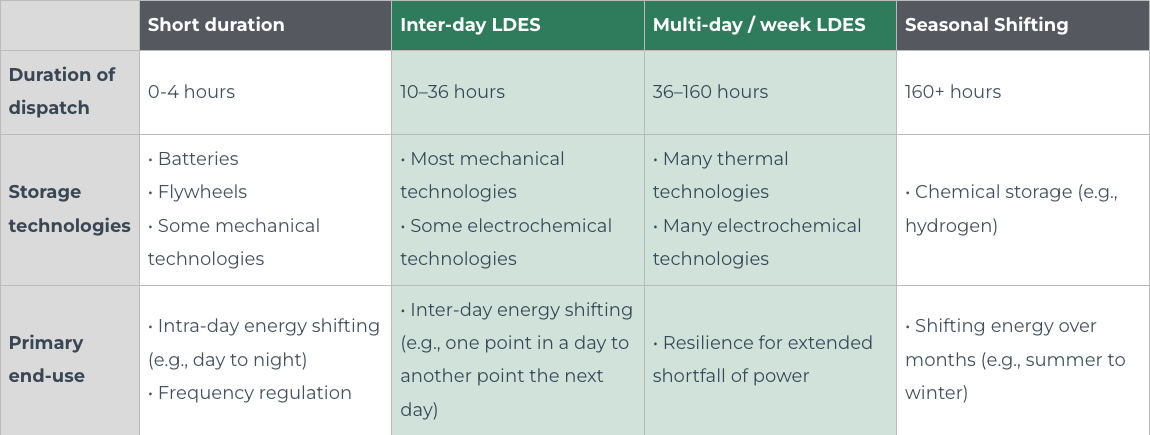
Source: United State Department of Energy
You may note that there’s no definition for anything between 4 and 10 hours. While it’s likely safe to assume that the DOE would also consider this medium-duration storage, there’s also a chance that it was left undefined due to lack of clear market interest in these durations.
Innovative Battery Technology
Renewable energy is poised to play a major role in lowering greenhouse gas emissions, especially with the shift to electric heating and transportation. Short-, medium-, and long-duration energy storage are all important in balancing low and high demand energy periods, the use of renewable energy sources, and grid resiliency.
Continued innovation is key to the future of energy storage. Alternative battery solutions that offer lower cost, a wider range of durations, and reduced environmental impact hold immense promise for hitting net-zero mandates worldwide.
Alsym batteries can be used for any discharge duration from 4 to 110 hours, and can recharge in as few as 4 hours. This means Alsym batteries can easily be used for short, medium, and long-duration storage without the need for additional technologies (we call this wide-duration storage). They combine high energy and high round-trip efficiency with a minimal footprint to offer low, industry-leading levelized cost of storage (LCOS). And unlike some dedicated long-duration storage technologies which lose 40% of charge per month, Alsym batteries have high long-term energy retention similar to lithium-ion.
Learn more about what Alsym is doing to enable the next generation of “wide-duration” energy storage.
